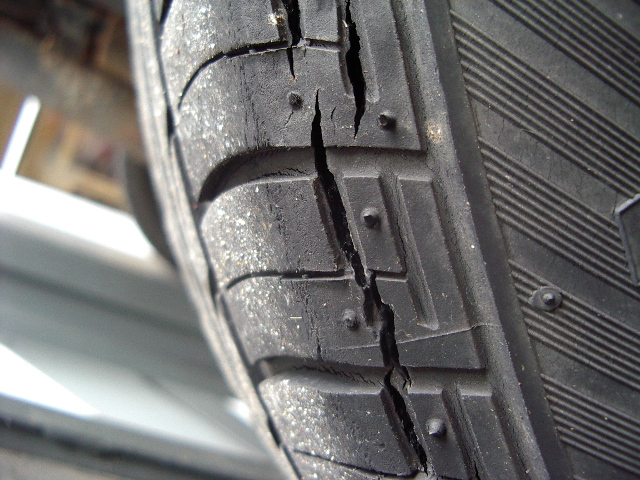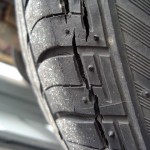
Are your tyres past it?
To help identify their age, all tyres display a coded date of manufacture and these codes are usually located in a ‘window’ on one sidewall. The first two digits represent the week and the following the year of manufacture, but if you are in doubt visit us or any other National Tyre Distributor Association member’s depot to have an expert verify how old your tyre is.
The National Tyre Distributor Association recommends that tyres over 10 years old are checked for old age however we have witnessed tyre age defects in tyres as young as 5 and 6 years old.
Just because your tyre is 5, 6, or even 10, years old it does not automatically make it unsafe, that depends on conditions, however, although age deterioration of tyres is often very visible, internal components cannot be examined. I have changed many caravan tyres on the roadside that have failed but without the tale-tale signs of old age.
Simon Rees – General Manager

The following appear with varying degrees but all are common signs of age deteriorations.
- Cracking/crazing on the side wall of the tyre, caused by its flexing.
- Distortions of the tyre tread.
- Deformation of the carcass of the tyre.
- Deterioration of the ride quality caused by vibrations through the tyre, often first confused with wheel balance.
Note, excessive or irregular wear can indicate problems such as misalignment.
The spare tyre: out of sight…
Very few cars will run one set of tyres for 10 years, but many will still have a decade old tyre on board namely the all-too-often-forgotten spare.
Next time your tyres are checked, don’t forget to get the spare inspected.
Damage through ageing is more common with caravans, trailers, horse boxes and other vehicles only used occasionally. Caravans and trailers are often static for months, but although the tyres are not moving, they are still under load. Caravans are usually stored in the open, making tyres prone to ozone damage, with cracks or ‘crazing’ of the rubber. This process is then accelerated by the ultraviolet rays in sunlight The Caravan Club offers the following advice, which can also be used for trailers: “As a general rule, it is advised that caravan tyres should ideally be replaced when 5 years old, and should never be used when more than 7 years old. This advice is borne out by the Club’s own research into caravan tyre failures, which confirms that the likelihood of a tyre problem increases after such age. Our research further suggests that tyres which need a high inflation pressure (say 50psi or more) require greater care still. Such tyres should be closely examined for signs of deterioration from 3 years old, and it would be strongly advised not to use them beyond 5 years old. It is not the case that all tyres over these ages will rapidly fail however, the statistical likelihood of a problem occurring increases noticeably with age. Given the disruption to your holiday that a tyre failure could cause (let alone the risk involved), it is strongly recommended that you follow this guidance.” Source: caravanclub.co.uk Further information on horse box tyre safety can be obtained from the British Horse Society website: bhs.org.uk
